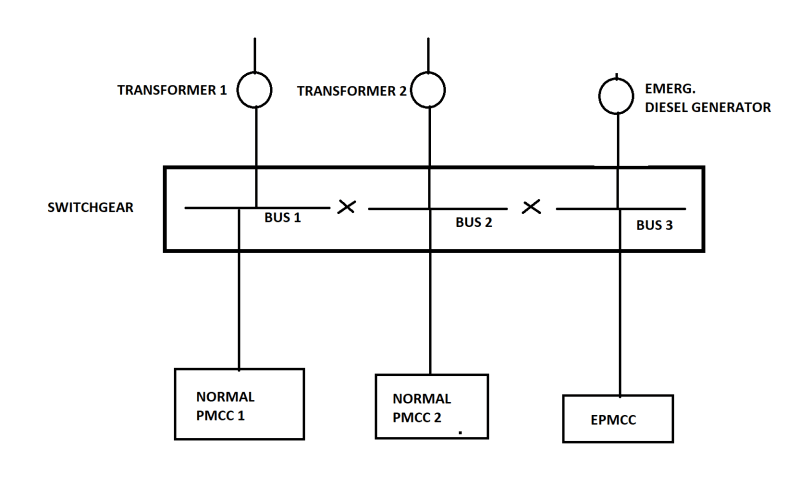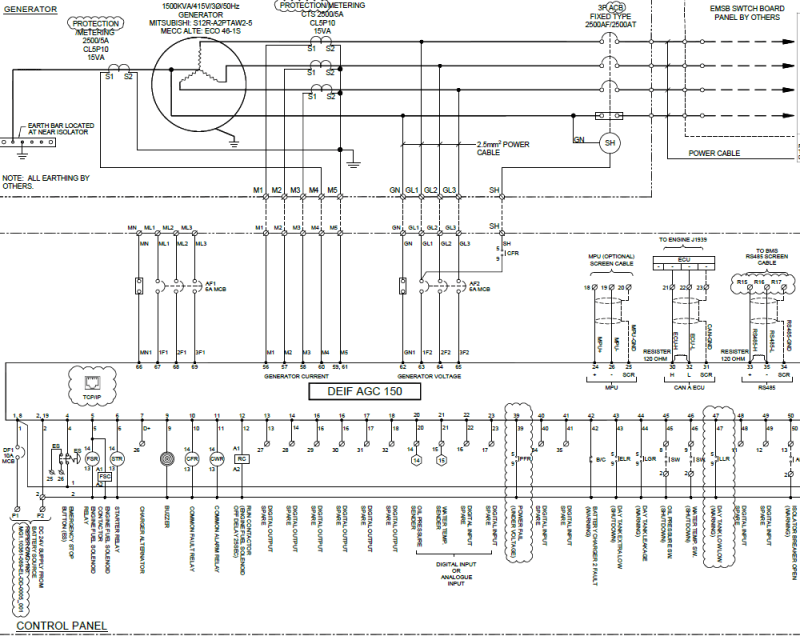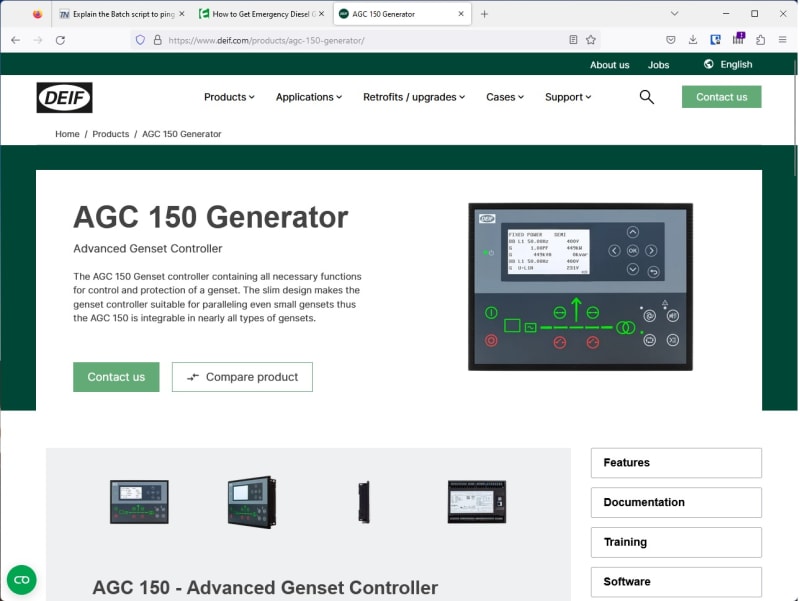Hi,
Please help me to understand on how to wire emergency diesel generator to Switchgear so that when there's a power failure, Generator can start automatically.
I am clear about power cabling. I'm confused about the control cable wiring. I need to sense the voltage loss in Switchgear so that the generator will start and feed to emergency control panel.

I want Generator to start automatically when there's a power loss in switchgear.
Below is the generator vendor wiring. Please help me understand how can I do control wiring to get generator automatically start.

Please help me to understand on how to wire emergency diesel generator to Switchgear so that when there's a power failure, Generator can start automatically.
I am clear about power cabling. I'm confused about the control cable wiring. I need to sense the voltage loss in Switchgear so that the generator will start and feed to emergency control panel.

I want Generator to start automatically when there's a power loss in switchgear.
Below is the generator vendor wiring. Please help me understand how can I do control wiring to get generator automatically start.


